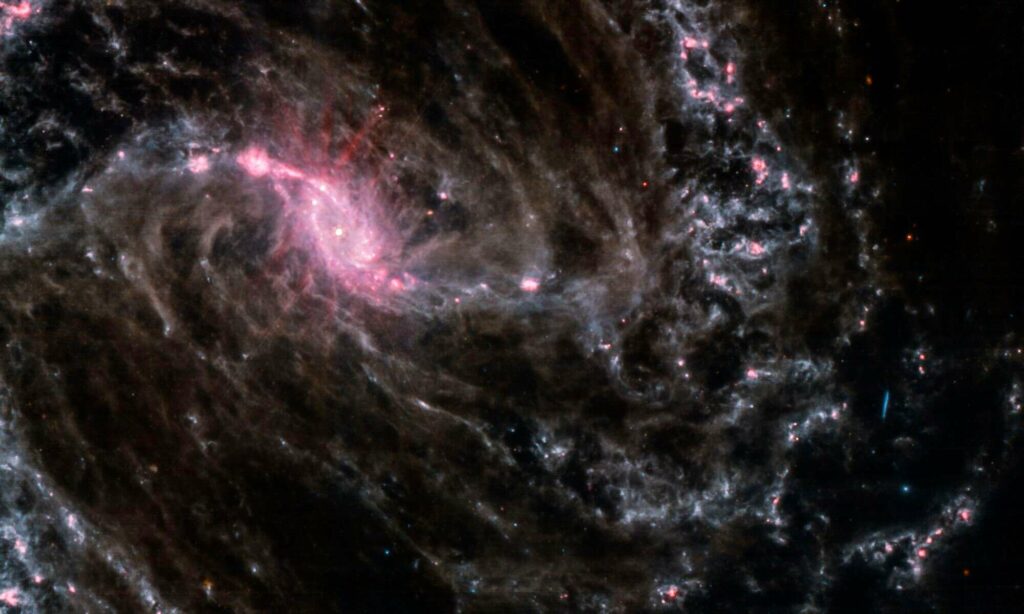Our experts examine the hottest new research
CUTTING EDGE
Expansion leads to increased tension
JWST observations seem to confirm cosmology’s biggest conundrum

Cosmologists like an argument, and one of the biggest surprises of the last decade has been the slow emergence of a disagreement between various methods of measuring the Hubble Constant, the speed of the Universe’s expansion. Two camps exist. There are those who study the cosmic microwave background, light emitted just 400,000 years after the Big Bang, and extrapolate forward to work out the Constant. They get consistently higher values than their rivals, who measure expansion directly by observing the present-day Universe. As each set of measurements has grown more accurate, this difference – euphemistically known as the ‘Hubble tension’ – has only increased.
JWST should help, especially with those local measurements which rely on studying Type Ia supernovae. These brilliant explosions shine with roughly the same peak luminosity wherever they occur. Knowing how bright they really are, we can work out their distance in the same way that you would judge the distance of a car by observing the brightness of its headlights when crossing the road at night. (This excellent analogy was shared with me by my colleague Becky Smethurst, and it works well – in fact, just as we could do a better job by knowing the make and model of each car, we can improve our Type Ia measurements by adjusting them according to how different types brighten and fade.)
“The Hubble Space Telescope is called Hubble because one of its original purposes was to pin down the Hubble Constant once and for all”
The supernova distance scale needs to be calibrated, though. Since Henrietta Leavitt in the early 20th century, astronomers have done this by spotting Cepheids, bright variable stars the speed of whose pulses reveals their luminosity and hence their distance. The Hubble Space Telescope is called Hubble because one of its original purposes was to observe more of these stars, and thus pin down the Hubble Constant once and for all.
And yet there is still tension. One possibility is that Hubble may be systematically wrong in its measurements of Cepheids, with contamination from any red giants lurking in the background a particular worry. This sort of problem is worse in the infrared, a wavelength range often used because it is relatively unaffected by dust. While observations for the main JWST Cepheid programme have only just started, a short paper has given us a preview.
One of the nearby galaxies which has hosted a Type Ia supernova, NGC 1365, has already been snapped by JWST, as part of an effort to study its star formation, and this month’s paper uses the data obtained for this purpose to check in on NGC 1365’s Cepheids. The news is good for lovers of tension; these new results agree with the HST measurements, so there’s no evidence of any systematic error that might bring the measurements together.
It is, though, just one galaxy. If these results are borne out by studies of many more, it’ll be a boost for those cosmologists who hope that explaining the observed difference will lead us to new theories, and perhaps a new understanding of the cosmos. New results should turn up later this year. Watch this space!

Prof Chris Lintott is an astrophysicist and co-presenter on The Sky at Night.
Chris Lintott was reading A First Look at Cepheids in a SN Ia Host with JWST by Wenlong Yuan et al.
Read it online at: arxiv.org/abs/2209.09101